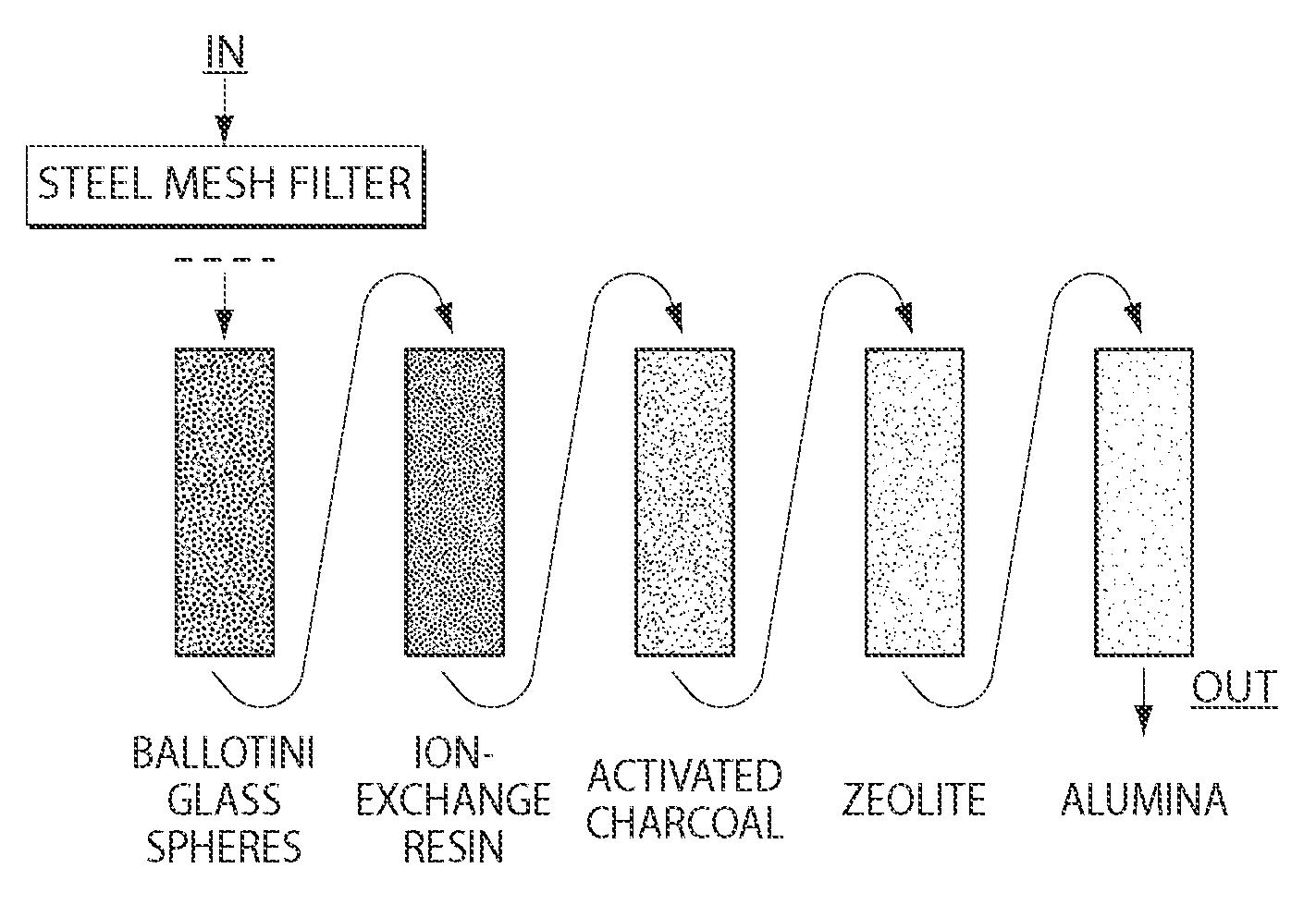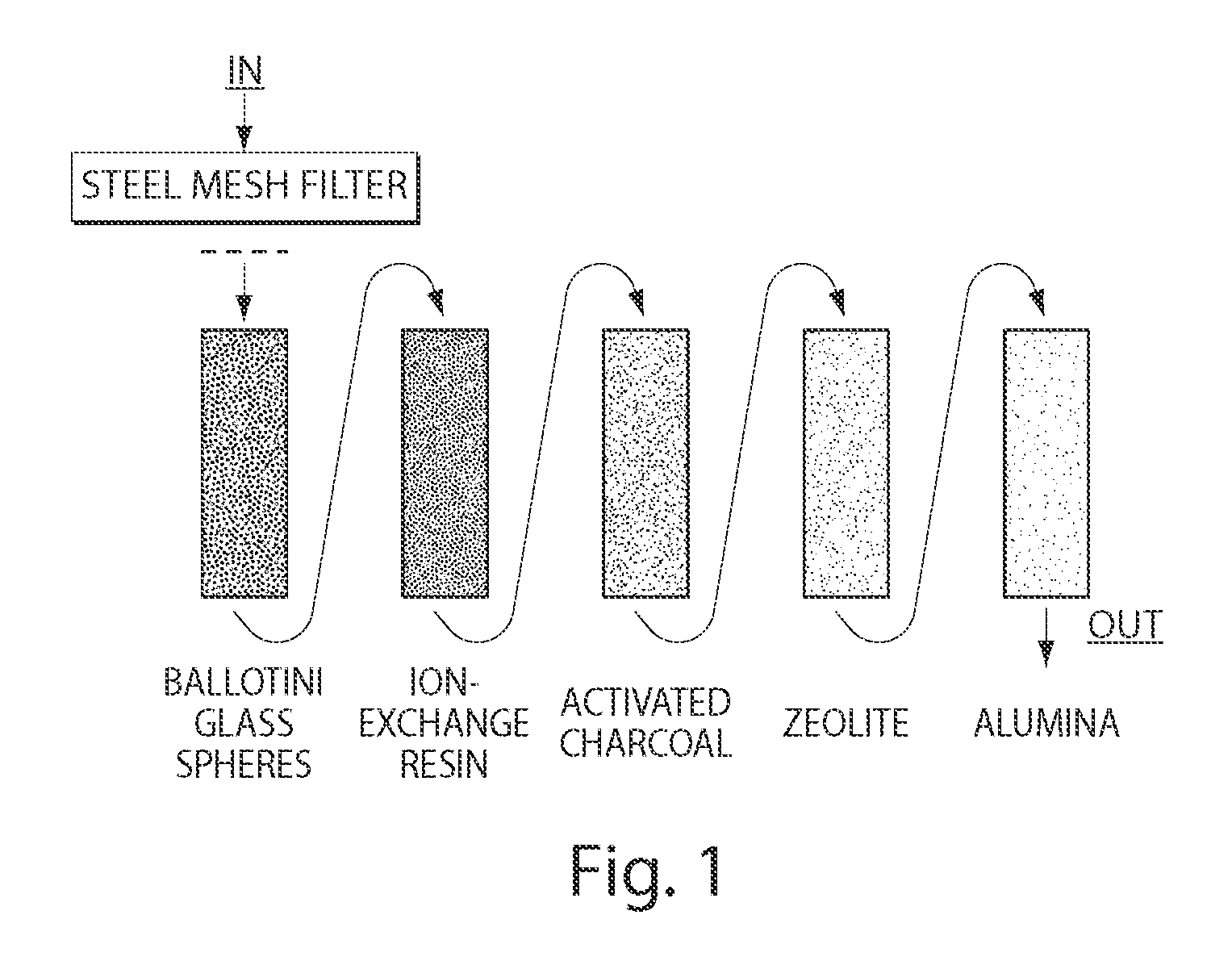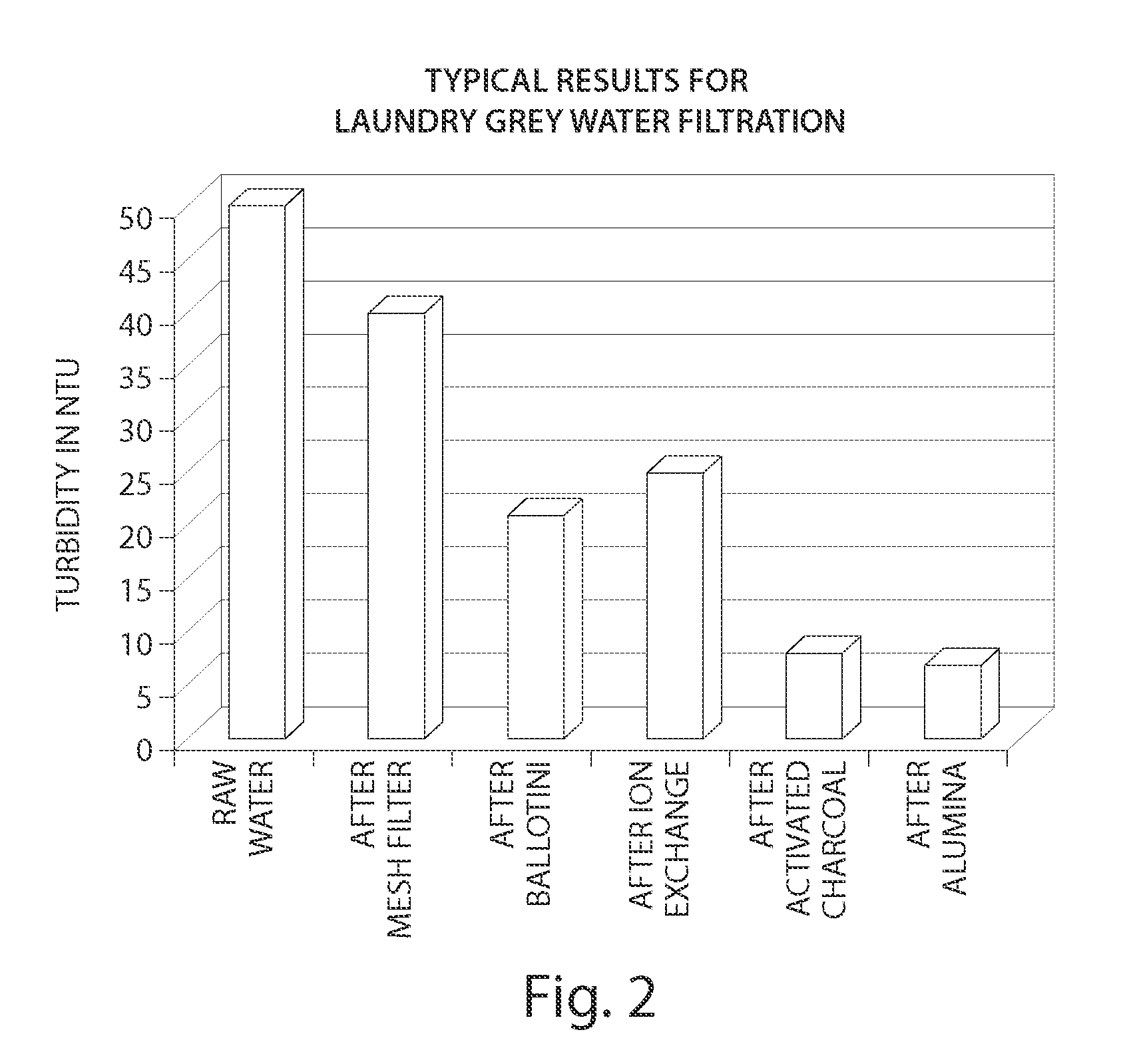Method and apparatus for removing contaminants from water
a technology of water purification and water treatment, applied in the direction of water/sewage multi-stage treatment, other chemical processes, separation processes, etc., can solve the problems of serious public health concerns, water treatment process reliability, and the potential of such microorganisms entering water destined for human contact and/or consumption, etc., to achieve safe human contact, reuse and/or consumption
- Summary
- Abstract
- Description
- Claims
- Application Information
AI Technical Summary
Benefits of technology
Problems solved by technology
Method used
Image
Examples
example 1
[0203]The water used in the following Example was obtained from a commercial laundry. The basic properties of this grey water and some of the contaminants present in the water are listed below:
[0204]
Turbidity:50-100 NTUTotal solids:0.5 g / LPH:7-10Conductivity:0.5 mS / cm
[0205]We can estimate a typical BOD5 level of around 100 mg / l and coliforms at 106 per litre. In addition, we would expect bacteria, protozoa, viruses, anionic, cationic and non-ionic detergents, ammonia and some residual chlorine. There will also be some nitrates, sulphates and phosphates present.
[0206]The presence of surfactant in significant amounts in this sample is demonstrated by the extensive foaming of the sample on shaking.
[0207]The high turbidity value for the sample indicates that the water is not suitable for drinking or reuse in domestic situations. In comparison, it is worth noting that ultra pure distilled water has a turbidity value of about 0.02, drinking water has a turbidity value of 1-5 and reservoir...
example 2
[0214]A household grey water sample had an initial turbidity of 140 NTU. This water was filtered through a screening mesh filter, which reduced the turbidity to 128. this water had a pH value of 8.8 and had a total dissolved contents of about 0.9 g / L. The turbidity results graphed below were obtained following addition of 0.9 / L of aluminium sulphate flocculant (added as a concentrated, aqueous solution). The dense white floc structure precipitated from the solution was less than 10% of the solution volume.
[0215]The relatively clear supernatant, with a pH of about 6.5, was decanted from the floc sediment and was then filtered through a 4 cm high Ballotini column, containing 90-150 micron glass spheres, under gravity filtration. The turbidity value after filtration was found to be 0.06, which is very close to pure, distilled water (0.02) and much better than required for drinking water (typically up to 3-5) (See FIG. 4).
[0216]Results from other, similar experiments in...
PUM
| Property | Measurement | Unit |
|---|---|---|
| pore size | aaaaa | aaaaa |
| diameter | aaaaa | aaaaa |
| particle size | aaaaa | aaaaa |
Abstract
Description
Claims
Application Information
 Login to View More
Login to View More - R&D
- Intellectual Property
- Life Sciences
- Materials
- Tech Scout
- Unparalleled Data Quality
- Higher Quality Content
- 60% Fewer Hallucinations
Browse by: Latest US Patents, China's latest patents, Technical Efficacy Thesaurus, Application Domain, Technology Topic, Popular Technical Reports.
© 2025 PatSnap. All rights reserved.Legal|Privacy policy|Modern Slavery Act Transparency Statement|Sitemap|About US| Contact US: help@patsnap.com



